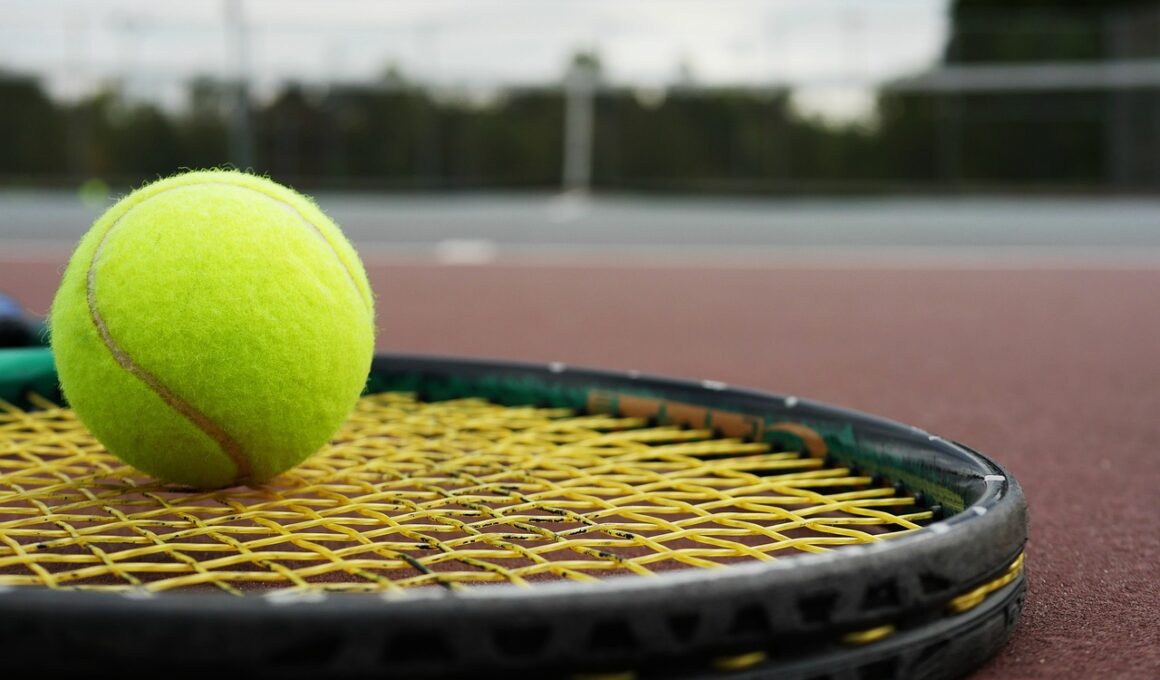Why Agility Ladders Are Crucial for Tennis Players
Agility ladders are instrumental in the training regimen of many athletes, especially tennis players. They provide a way to enhance foot speed, coordination, and overall agility, crucial elements for strong performance on the court. Regular use of these ladders can help players quickly change direction, which is vital while volleying or chasing down a ball. They are easily portable and can fit into almost any training environment, making them a readily accessible tool. Moreover, agility ladders encourage dynamic movements that simulate the quick, explosive bursts of energy needed in tennis. By incorporating agility ladder workouts, players can improve their lateral movements, thus enhancing their court coverage. In addition to physical benefits, agility exercises can also bring psychological advantages, as players feel more confident in their footwork abilities. To maximize the benefits of agility ladder training, players can perform various drills that focus on acceleration, deceleration, and balance. Keeping an eye on technique is paramount to avoid injuries. Overall, agility ladders serve as a multifaceted training solution that helps players excel during matches, providing them with a competitive edge.
A well-structured agility ladder workout program should seamlessly integrate with a player’s existing training. This ensures that players can gradually build upon their skills and improve without overexerting themselves. Firstly, warming up before starting agility drills is crucial; it reduces the risk of injuries and prepares the body for the workout ahead. Players should then begin with basic ladder drills focusing on foot speed to develop a strong foundation. Once comfortable, they can advance to more complex footwork patterns, incorporating shifts and quick jumps. It’s important to listen to your body throughout the training process, taking breaks as needed to recover. Additionally, balancing agility training with strength workouts is beneficial, as stronger legs contribute additional power and speed. Players should aim to dedicate at least two to three sessions a week for agility ladder exercises while ensuring not to neglect other areas of their training. Coaches and trainers should provide feedback during workouts to help players refine their techniques. By effectively utilizing agility ladders, tennis players can significantly enhance their gameplay and reduce the risks of injury during critical matches.
The Benefits of Agility Ladder Workouts
Agility ladder workouts offer numerous benefits that extend beyond mere speed. These exercises contribute to improved reflexes, which are critical for tennis players, as split-second decisions can determine a game’s outcome. Developing enhanced hand-eye coordination through regular agility training allows athletes to respond more quickly to unpredictable ball trajectories. Moreover, agility ladders promote better balance and body control, essential traits for executing precise shots. As tennis demands constant lateral movement, these workouts build the muscles used during quick changes of direction, improving overall athleticism. They also facilitate cardiovascular training, enhancing endurance for long matches. Players who work with agility ladders can experience increased stamina throughout their games, avoiding fatigue in crucial moments. Additionally, consistent agility training aids in muscle memory development, helping players instinctively respond to positions on the court. As confidence grows, players are likely to take more calculated risks, ultimately enhancing their competitive edge. Agility ladders also provide a fun and engaging way to diversify training routines, keeping players motivated. By regularly challenging themselves with different drills, players can maintain their enthusiasm and commitment to the sport.
To ensure a successful agility ladder training session, players should focus on proper technique and form. One recommended approach is to start with a light dynamic warm-up that targets all major muscle groups. Incorporating exercises like leg swings, high knees, and side shuffles prepares the body for more intense agility drills. When approaching the ladder, players should maintain a low center of gravity and engage their core for better stability. Moving quickly yet accurately through the ladder helps reinforce foot placement and timing, critical skills during a match. Trainers can introduce a variety of drills, such as in-and-out hops or lateral shuffles, depending on the player’s skill level. The key is to progressively challenge oneself by increasing speed and complexity while ensuring technique remains the focus. Players should record their progress over time to visualize improvements and stay motivated. It can also be beneficial to set specific goals, whether for speed, repetition, or overall agility. This goal-oriented approach maintains a competitive spirit and fosters continuous improvement as tennis players strive for their peak performances.
Measuring Progress and Technique
While agility ladder programs are great tools for improvement, regularly tracking progress ensures their effectiveness. Players should schedule assessments every few weeks to evaluate their skills. This involves measuring speed through timed drills or noting improvements in accuracy and dynamic movement. Additionally, seeking feedback from coaches or training partners is invaluable. They can provide insights on techniques or suggest new drills tailored to a player’s strengths or weaknesses. Analyzing video footage of agility workouts can also reveal unnoticed flaws in form or technique, allowing players to adjust improvements accordingly. As players progress, they can increase the complexity of ladder drills. This might involve incorporating resistance bands or performing series of repetitive movements at higher speeds. By adjusting workout intensity, players can ensure that they are continually challenged, pushing themselves to grow. Agility ladder training is most effective when combined with feedback and measurable goals. Ultimately, the goal is mastery of footwork on the court, enhancing overall gameplay and making players formidable opponents. Remember, progress may vary from one player to another, so maintaining a positive mindset remains essential during this journey.
A significant advantage of agility ladders is their versatility; they can be utilized in various training environments. Whether on the court, outside on grass, or in the gym, these ladders can enhance workouts without intensive equipment or complicated setups. Players can customize their training programs to fit their unique needs and goals. For example, they might choose to incorporate footwork drills, ladder runs, or even balance exercises to keep their training varied. Furthermore, agility ladders can be paired with other fitness equipment, creating a comprehensive workout routine. Players might combine ladder drills with plyometrics, such as box jumps or burpees, to work on explosive power and agility. Incorporating cardio conditioning drills alongside agility work can foster endurance while strengthening muscle groups that support tennis performance. The possibilities for combining exercises are limitless, which keeps training exciting and engaging. With the right mindset, players can tailor programs to max out fitness potential and performance levels. Utilizing agility ladders effectively can help develop the skills necessary to shoot for success on the tennis court, contributing to enhanced game performance and enjoyment.
Conclusion
In conclusion, agility ladders are more than just a tool; they’re a fundamental element in a successful tennis training program. Players who commit to incorporating agility ladders gain numerous advantages, from improving foot speed and coordination to boosting confidence and reducing injury risks. By paying attention to technique, tracking progress, and combining agility training with various exercise modalities, players can enhance their performance. They foster not only the physical attributes necessary for success in tennis but also mental resilience. The journey towards excellence in the sport requires dedication, and agility ladders can serve as the driving force behind that effort. For athletes, investing time in developing agility opens doors to improved gameplay and satisfying overall development. Whether a beginner or an advanced player, agility ladders cater to all levels of expertise, making them an accessible resource. Embracing these workouts can lead to noticeable improvements on the court. Now is the time to bring agility ladders into training regimens, ensuring players can elevate their performance when it matters most in matches. Undoubtedly, they play a crucial role in the growth and success of every dedicated tennis player.
Understanding the specific reasons why agility ladders stand out in sports training can further enhance their application in tennis. Agility ladders not only facilitate a wide variety of drills that aim at improving speed and agility; they also promote cognitive function due to the necessary concentration on foot placement. The ability to effectively navigate through the rungs while maintaining a streamlined motion engages the brain in sync with body movements, resulting in sharper overall coordination. This heightened focus is particularly beneficial during intense matches when players need to respond to fast-moving opponents’ strokes. By refining footwork through agility ladder activities, players can establish muscle memory that enables them to move instinctively during critical moments. Furthermore, these workouts can be easily adapted for individual or group training sessions, making them a versatile option across different team arrangements. Tennis players at varying levels, whether novices or experienced athletes, can equally benefit from this type of training. In practical terms, agility ladders offer an economical way to enhance fitness and skill without bulky equipment, making the solution widely accessible for tennis enthusiasts everywhere.


